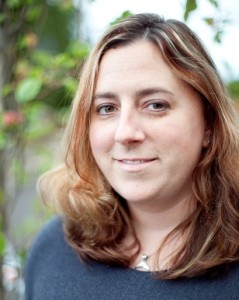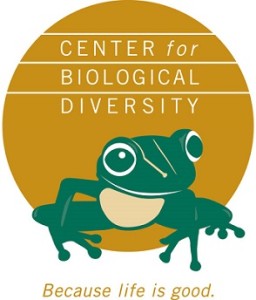
The Center for Biological Diversity’s graphic carries a powerful message on the destructiveness of eating meat
The Center of Biological Diversity Shows the Best Way to Save Wildlife Is a Change in Diet
The Center for Biological Diversity, a nonprofit that has protected more than 500 endangered species and 220 million acres of their habitat, is an organization that is taking on the most unpopular truth in the environmental movement.
The Center’s newsletter, Endangered Earth, says it best in advocating their new Earth-friendly Diet Campaign. “You have at least three chances a day, every day, to save wildlife. Choose to take extinction off your plate.” You do this by pledging to cut your meat consumption by at least one third – and the less meat you eat, the better.
The Campaign’s site, TakeExtinctionOffYourPlate.com, shows how animals raised for food directly compete with wildlife for land and resources, such as food and water. Ranching business people are behind the shooting, trapping, and poisoning of millions of animals a year. Why? These wild animals threaten their profits from grazing cows, sheep, and other farmed animals. The animals massacred include wolves, bears, prairie dogs, elk, and deer. The pollution from concentrated farmed animal operations and the vast areas used to grow crops to feed them
also degrades the ever-shrinking habitat that wildlife are squeezed into.
As soon as I read about the Earth-friendly Diet Campaign, I had to know more, so I contacted Stephanie Feldstein, the Center’s Population and Sustainability director. First I asked how she got involved. “I started working with the Center for Biological Diversity in October 2013. I had always been a fan of the Center’s work and the unique mix of science, legal expertise, creative media and citizen activism that makes the organization such an effective advocate for wildlife. So, when I saw that they were not only hiring people to work on population, but also expanding the program to encompass overconsumption issues, including the meat industry, I couldn’t wait to apply.” Stephanie has been vegetarian since she was 16, and is well down the road to being totally plant-based.
MORE ON THE CAMPAIGN
I asked Stephanie how the Earth-friendly Diet Campaign originated and what has made it successful. “When we expanded the population program to take on
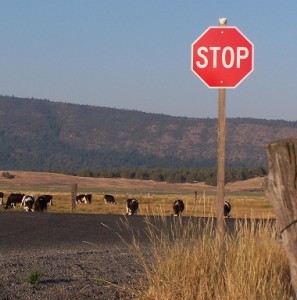
This picture says it all. Cattle grazing is highly destructive to life on earth. Just stop eating meat.
issues of sustainability and overconsumption, we knew we wanted to start by addressing the industries that do the most damage to wildlife and the environment – and the meat industry is at the top of that list. One thing that’s made this campaign successful in reaching new audiences is that it connects the issues around meat production and consumption to other issues people care about, such as endangered species and climate change.”
Stephanie continued, “We also work to make the campaign feel accessible, from the Earth-friendly Diet pledge that meets people where they are by providing different levels of reducing meat consumption along with the positive impacts at each level, to using social media and creative graphics that people can share. We’ve presented to a variety of audiences on the campaign, from college classes on sustainability to animal protection advocates who are interested in learning more about the environmental side of the issue.”
ENTHUSIASTIC RESPONSE
I asked about media reaction. “We’ve received a lot of media interest in this campaign because we
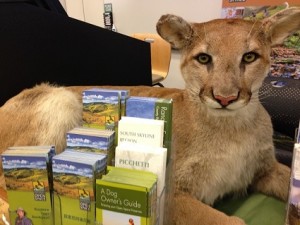
This beautiful mountain lion in the prime of life was shot for eating cows and sheep in Northern California. Take Extinction Off Your Plate educates people on the slaughter of carnivores, such as mountain lions and wolves, who might endanger the profits of the ranching industry
brought a unique angle to it. Reporters told me that they’ve covered the animal welfare and health-related concerns, and the climate impact of meat production, but no one had really talked about the direct and indirect impacts of the industry on wildlife before Take Extinction Off Your Plate.”
Reaction from the public is enthusiastic. “People are excited to see an environmental group addressing the environmental devastation caused by the meat industry. They’re also often shocked to learn about the extent to which meat consumption threatens wildlife. One piece of feedback we often hear is that people wish the campaign focused only on factory farming and supported “sustainable, grass-fed” meat. With more than 318 million people in the U.S. and more than 10 billion land animals raised for food each year, there are simply too many people eating too much meat for any form of raising livestock to be sustainable. Plus, some of the greatest threats to endangered species come from grazing cattle. That’s why we advocate for people to eat less or no meat, regardless of
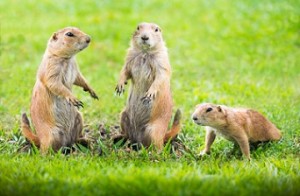
Whole colonies of prairie dogs, who are an integral part of the ecosystem, are wiped out to make the landscape more friendly for cattle
where it comes from.”
The Center actively seeks more company in telling the truth about how destructive meat is for the environment in general and wildlife specifically. Stephanie notes, ” Since we launched our campaign, I’ve talked with a number of people from other environmental groups, and the reactions vary. Some are glad to see us taking it on, but don’t see it as something their organizations are likely to tackle anytime soon. Others want to talk about how we approached the campaign and what the response has been to help them explore how they might launch a similar initiative within their own group. We’d love to see more environmental organizations addressing the impacts of meat production, which is why I make myself available as a resource to help others figure out how to integrate meat-related issues into their own program work and mission.”
The Center will be releasing an Extinction-Free BBQ campaign in time for Labor Day, featuring plant-based recipes from chefs and vegan bloggers, as well as a new infographic and other materials to share for a wildlife-friendly holiday. Keep an eye on the Campaign’s site TakeExtinctionOffYourPlate.com for a growing number of resources. The Center’s page on grazing is another excellent information source on the destructiveness of so called “grass-fed beef.”
If you enjoyed this post, you may want to read more on the nutritional reasons that plants are the base of the food chain.
Intrigued? Now you can use our Whole Foods Blog Finder to target informative, fun postings on whole foods, plant-based diets. Quick information at no cost!
Blog posting by Janice Stanger, Ph.D. Janice authored The Perfect Formula Diet: How to Lose Weight and Get Healthy Now With Six Kinds of Whole Foods, a book that shows you how to be your healthiest on a plant-based diet. Janice is deeply committed to saving wildlife and the planet through educating people on the all the reasons to leave extinction off their plates.
Tags: Center for Biological Diversity, Earth-friendly Diet Campaign, extinction, Plant-based nutrition, Stepanie Feldstein, Take Extinction Off Your Plate, whole foods plant-based diet
